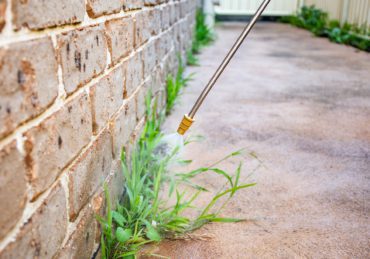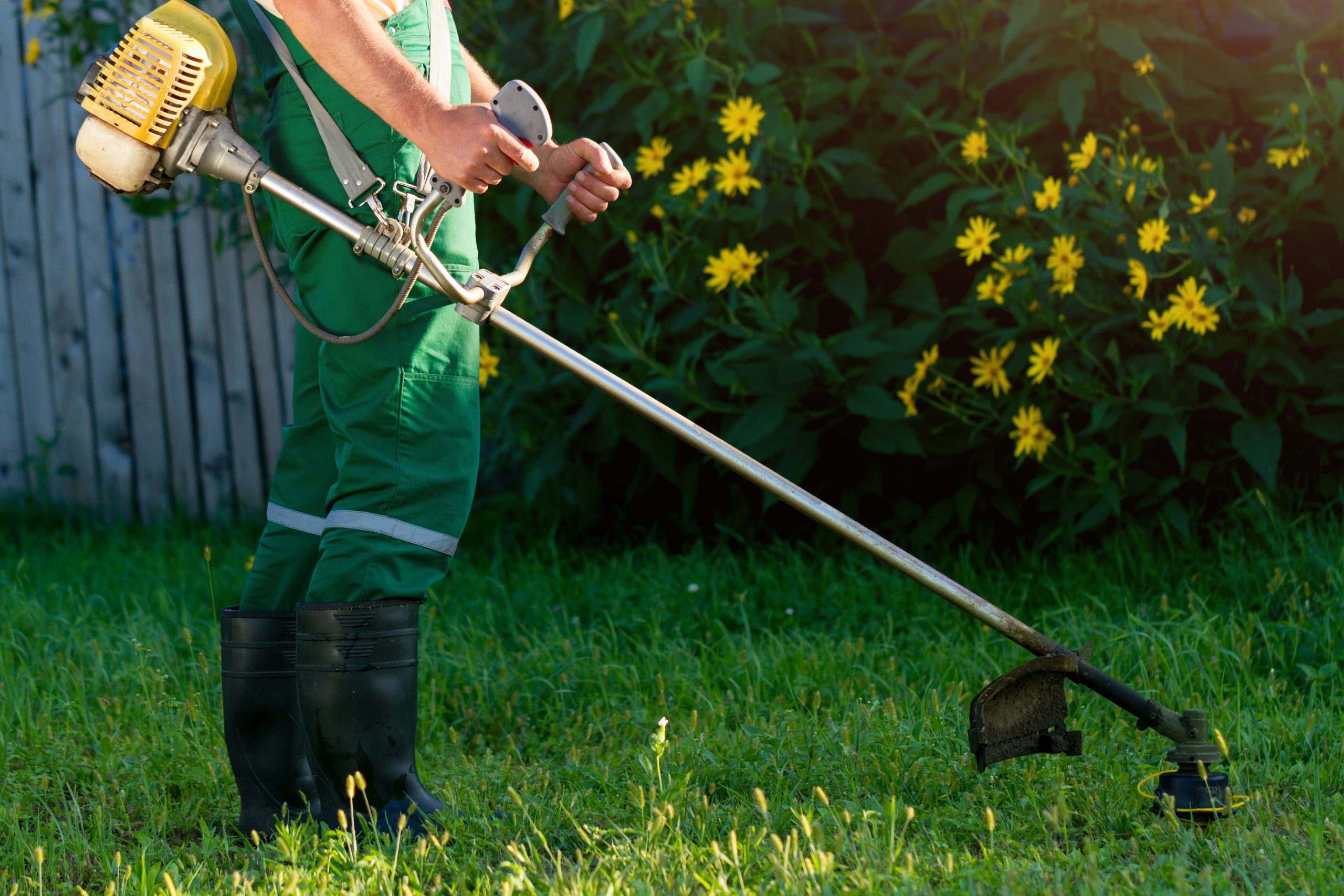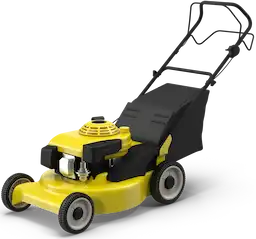Timing the last mow of the season is the essential for maintaining a healthy lawn through winter and ensuring vibrant growth in spring. As temperatures drop, grass growth naturally slows, and a final mow at the right time helps prepare the lawn for dormancy. Cutting grass too late, particularly after a frost, can damage grass blades and increase vulnerability to disease. Ideally, mowing should stop once daytime temperatures are consistently below 50°F, but before the first hard frost. Proper timing also discourages pests and prevents matting, allowing grass to store energy and strengthen roots for optimal healthy resilience.
Why Timing Matters for the Last Mow of the Year
Cutting grass at the right time in late fall is essential for preventing winter damage and ensuring a healthier, greener lawn in spring. As temperatures drop and grass growth slows, mowing becomes less frequent; however, stopping at the right time is critical. Mowing your lawn too late, especially after frost, weakens blades and exposes the lawn to fungal diseases, such as snow mold, which thrive on long, damp grass under snow cover. Mowing too short, on the other hand, can expose the roots, making them more susceptible to extreme cold and dehydration. The ideal last mow height should be around 2 to 2.5 inches, which minimizes matting while still providing enough cover to insulate and protect the roots.
Timing also impacts energy storage in grass. During the fall, grass prepares for dormancy by storing carbohydrates in its roots, which act as an energy reserve to support early spring growth. Mowing at the right time and height allows grass to optimize this storage process, leading to a more vigorous comeback in spring. In regions where frost is common, it’s best to stop mowing your lawn when daytime temperatures consistently fall before 50°F but before the first hard frost, ensuring the lawn is well-prepared for winter’s stresses.
Protecting Your Lawn’s Health
Timing the last mow plays a crucial role in root protection, dormancy, and overall turf resilience. Mowing just before grass goes dormant helps maintain an ideal height, around 2 to 2.5 inches, which insulates the roots without creating conditions for disease. As grass prepares for dormancy, it stores energy in its roots, essential for surviving winter and fueling spring growth. Cutting too late disrupts this process and exposes roots to cold stress. Proper timing also strengthens turf resilience, as healthy roots and optimal energy reserves enable the lawn to withstand winter conditions and bounce back more robustly in spring.
Preventing Fungal Diseases
Leaving grass too long before winter increases the risk of fungal diseases like snow mold. When grass is left tall, it tends to mat under the weight of snow, creating a dense, damp environment ideal for fungal growth. Snow mold, a common winter lawn disease, thrives in these conditions, especially when snow covers unfrozen ground. The thick layer of grass traps moisture, which can encourage mold to spread, killing grass in patches and weakening the lawn overall. By cutting grass to an optimal height of around 2 to 2.5 inches, airflow improves, and the likelihood of fungal infections significantly decreases.
Key Signs It’s Time to Stop Mowing
Several observable signs signal the approach of the final mow period, helping homeowners prepare their lawns for winter. One of the first indicators is a noticeable slowdown in growth. As daytime temperatures consistently fall below 50°F, grass growth becomes minimal, requiring fewer mows. This temperature drop, combined with shorter daylight hours, reduces photosynthesis, meaning the grass doesn’t need regular trimming. Another important sign is frost; once frost becomes regular, grass blades become brittle, and cutting them risks damage and disease. Frost also pushes grass into dormancy, shifting its energy focus from leaf growth to root storage, a sign to stop mowing.
Leaf drop from nearby trees is another signal to watch for, as fallen leaves can block sunlight and trap moisture against the grass. When the lawn begins accumulating more leaves than usual, it’s a good time for a final mow, followed by raking to prevent leaf build-up. Excess leaves can create a damp, dark environment conducive to fungal growth, such as snow mold, which can harm the lawn.
Lastly, the color and texture of the grass itself can serve as indicators. Grass that turns duller green and feels less pliable suggests it is preparing for dormancy. Observing these signs can help determine the ideal time for a final mow. Stopping at the right time encourages healthy root systems and a resilient lawn in the spring.
Temperature Drops Consistently Below 50°F
Lower temperatures slow down grass growth as the plant’s metabolic processes decrease to conserve energy for winter dormancy. When daytime temperatures consistently drop below 50°F, grass growth nearly stops, signaling that it’s time to end mowing for the season. Cutting the grass beyond this point can weaken it, as the plant shifts its energy focus from leaf production to root preservation and carbohydrate storage. Mowing too late disrupts this transition, making the grass more vulnerable to frost and disease. Stopping mowing at the right time allows grass to go dormant naturally, strengthening its resilience for winter conditions.
The First Frost and Its Impact
Frost is a clear signal that grass is entering dormancy, marking the end of its active growing season. When frost settles on grass, it crystallizes water inside the cells, causing growth to slow dramatically as the plant conserves energy to survive colder temperatures. Repeated frost exposure tells the grass to shift focus from blade growth to root preservation and energy storage, preparing for winter. Mowing after frost can damage the brittle, frost-covered grass blades, making them more prone to disease. Recognizing frost as the signal to stop mowing allows grass to fully transition to dormancy, protecting its health for spring.
Leaf Drop and Daylight Reduction
Shorter days and falling leaves signal that grass is slowing growth and preparing for dormancy. Reduced sunlight limits photosynthesis, which curbs growth, while leaf drop can block sunlight and trap moisture. Together, these signs indicate it’s time for a final mow to maintain lawn health before winter.
Timing Your Final Mow for Maximum Lawn Health
Planning a well-timed last mow offers significant benefits for a lawn’s health, both over winter and into the following spring. Timing this final mow correctly supports the grass’s natural transition to dormancy, allowing it to conserve energy and focus on root strength rather than leaf production. When grass is cut to an optimal height, around 2 to 2.5 inches, before it goes dormant, it minimizes matting under snow and reduces the risk of diseases like snow mold, which thrive in overly dense, damp environments. A proper last mow also enhances airflow and sun exposure across the lawn, supporting better overall health.
This planning also allows grass to maximize energy storage in its roots, which strengthens the lawn’s ability to endure winter stresses like freezing temperatures and low light. Grass that enters winter with adequate root reserves will generally experience a more vigorous recovery in spring, leading to earlier and healthier growth. A well-times last mow prevents overgrowth that could block sunlight or encourage pest habitats, setting the stage for a resilient, lush lawn when temperatures warm. By paying attention to weather patterns and grass growth, homeowners can ensure their lawns are better protected, more resilient, and prepared for vibrant spring growth.
The Ideal Grass Height for Winter
Cutting grass to around 2 inches before winter helps protect roots and reduces the risk of fungal diseases. At this height, grass is short enough to prevent matting under snow, which can trap moisture and create a breeding ground for fungi like snow mold. Additionally, maintaining a 2-inch height provides some insulation for the roots without exposing them to extreme cold. Shorter grass also promotes airflow, which reduces dampness and lowers the chances of disease. By trimming to this optimal height, the lawn is better protected and more resilient, setting it up for healthier growth when spring arrives.
Adjusting for Cool-Season vs. Warm-Season Grass
The timing of the final lawn cut depends on your grass type and regional climate. Cool-season grasses like Kentucky bluegrass and fescues remain active longer in cooler temperatures, so their last mow can be later in fall, typically when daytime temperatures drop consistently below 50°F. In warmer climates or for warm-season grasses like Bermuda and zoysia, mowing generally stops earlier, as these grasses go dormant sooner when temperatures fall below 55°F. Coastal and mild regions might allow mowing into winter, while colder areas require an earlier final mow. Tailoring the last cut to grass type and local climate ensures optimal winter protection.
How to Prepare Your Lawn After the Last Cut
After the final mow, several key lawn care steps help prepare the grass for a healthy comeback in spring. First, clearing fallen leaves and debris is essential; excess leaves can block sunlight and trap moisture, creating conditions ripe for fungal diseases. Raking the lawn thoroughly keeps it clean, reducing moisture build-up, and allows air and sunlight to reach the grass more effectively. Aerating the soil after the last mow is also highly beneficial, especially if the lawn has experienced heavy foot traffic or compacted soil. Aeration loosens the soil, promotes better nutrient and water absorption, and strengthens roots.
Applying a fall fertilizer high in potassium is another valuable step. Potassium supports root growth and increases the grass’s resistance to cold, disease, and drought. Fertilizing before winter dormancy ensures the roots have nutrients to store and use through winter, supporting early, robust growth in spring. Overseeding, particularly in thin areas, helps thicken the lawn and improve resilience, giving grass a head start against spring weeds. Finally, watering one last time before frost ensures the roots are hydrated.
Fall Fertilization for Winter Protection
Late fall fertilization proves essential nutrients that strengthen grass roots before winter, supporting a healthier lawn in spring. Fertilizers high in potassium are ideal at this stage, as potassium boosts root development and enhances the grass’s resilience to cold, drought, and disease. When applied after the final mow, the nutrients can be absorbed and stored within the roots as grass prepares for dormancy. This nutrient reserve gives grass the energy to survive winter stresses and promotes faster, thicker growth when temperatures rise. Late fall fertilization is a simple but impactful step that significantly improves root strength and overall lawn health.
Aeration and Over-Seeding Tips
Aerating and overseeding cool-season grasses in fall can greatly enhance lawn thickness and health. Begin by aerating to loosen compacted soil and allow better access for water, nutrients, and oxygen to reach grass roots. Core aerators are the most effective, creating small holes that reduce soil compaction and improve seed-to-soil contact. After aeration, spread a high-quality grass seed over the lawn, focusing on thin or bare spots. Choose a seed blend suited to your climate for best results. Lightly water daily for the first two weeks to encourage germination. This process supports denser, healthier growth, preparing cool-season lawns for winter dormancy and spring recovery.
Avoiding Common Post-Mowing Mistakes in Fall Lawn Care
Avoiding common fall lawn care mistakes can ensure a healthier, more resilient lawn in spring. One frequent error is mowing too short before winter, which can expose roots to cold stress and increase the risk of disease. Grass should be kept at around 2 to 2.5 inches to insulate roots and prevent matting under snow. Another mistake is skipping the final mow too early. Grass that’s left too long becomes matted and more susceptible to fungal diseases, especially snow mold, which thrives under damp, compacted conditions.
Neglecting to rake leaves is also problematic, as excess leaf cover can trap moisture, block sunlight, and create ideal conditions for fungal growth. A quick rake before winter helps reduce the risk. Many homeowners also overlook fall fertilization, assuming spring is the only time for feeding; however, fall fertilization, especially one high in potassium, strengthens roots and helps grass store energy for winter. Lastly, failing to aerate compacted soil restricts root growth and nutrient uptake. Aerating before winter loosens soil and boosts root access to water, air, and nutrients, setting the stage for healthier spring growth.
Why Cutting Too Short Can Harm Your Lawn
Scalping, or cutting your lawn too short, poses significant risks that can jeopardize a lawn’s health, especially before winter. When grass is cut too low, the roots become exposed to harsh winter conditions, increasing susceptibility to freeze damage and dehydration. This exposure can weaken the plant, making it more vulnerable to diseases and pests. Additionally, scalped grass loses its ability to photosynthesize efficiently, reducing energy storage in the roots necessary for survival during dormancy. Without adequate leaf surface, grass struggles to recover in spring, often resulting in thin patches and increased weed invasion, ultimately leading to a less resilient lawn.
The Downside of Ignoring the Final Mow
Failing to perform a final mow before winter can lead to matting, where long grass blades lie flat under snow, creating a damp environment that fosters fungal diseases like snow mold. This matting traps moisture against the grass, preventing airflow and sunlight from reaching the blades, which weakens the grass and makes it more susceptible to infection. Over time, the combination of darkness and dampness can cause patches of grass to die off, leading to thinning and bare spots in the lawn. A timely last mow helps prevent matting, promotes better air circulation, and reduces the risk of fungal outbreaks during the colder months.
Tips for Lawn Mower Maintenance Before Winter Storage
Preparing your lawn mower for storage at the end of the season ensures it’s ready for use again in the spring. Here’s a checklist to follow:
- Clean the Mower: Remove grass clippings, dirt, and debris from the mower deck, blades, and undercarriage using a brush or a hose. Ensure all components are dry to prevent rust.
- Sharpen the Blades: Dull blades tear grass rather than cut it cleanly. Remove the blades and sharpen them using a file or sharpening tool. Alternatively, consider professional sharpening for optimal results.
- Change the Oil: Replace old oil with fresh oil to prevent engine damage. Check the oil filter and replace it if necessary.
- Replace the Spark Plug: Installing a new spark plug ensures easy starting in spring.
- Check Fuel System: If your mower uses gas, either drain the tank or add fuel stabilizer to prevent old gas from gumming up the system.
- Store Properly: Store the mower in a dry, protected area, preferably on a mower lift or shelf to keep it off the ground.
When to Resume Mowing in Spring
In early spring, the ideal time to start mowing your lawn is when daytime temperatures consistently reach around 50°F and grass begins to show signs of active growth, typically known by its vibrant green color and height increase. It’s essential to wait and give your lawn time to grow to about 3 inches before mowing for the first time, allowing it to establish strong roots after winter dormancy. Mowing too early can stress the grass and lead to uneven cuts, while waiting too long can result in excessive growth, increasing the risk of disease. Aim to keep the mower blades set at 2.5 to 3 inches to promote healthy growth and resilience.





